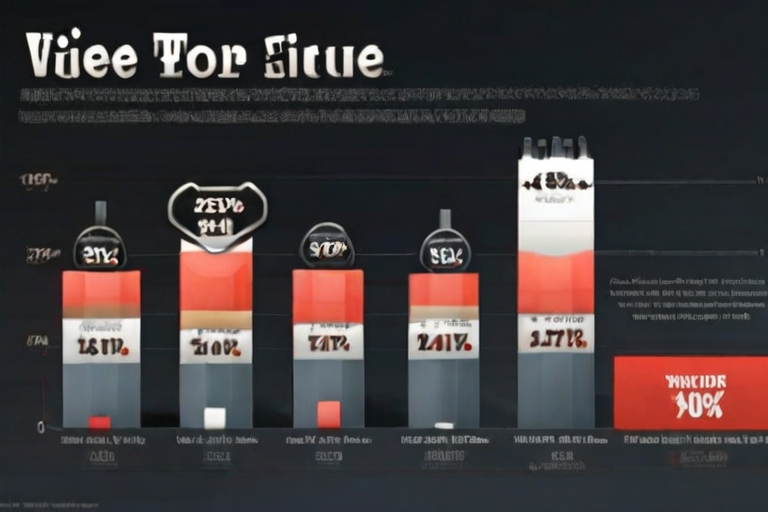Implementing hreflang tags is essential for optimal international e-commerce SEO, ensuring your site reaches the right audience across multiple regions. These tags help search engines understand the geographic targeting and language of your pages, improving user experience and search visibility. At Metrics Rule, we believe that mastering hreflang tags is crucial for e-commerce businesses looking to enhance their global presence. In this guide, we will provide you with a comprehensive approach to accurately implement hreflang tags and boost your international SEO effectiveness.
Introduction to Hreflang Tags in E-Commerce
Hreflang tags are essential HTML attributes that help search engines deliver the correct regional version of a web page to users. They play a crucial role in international e-commerce SEO by improving search engine indexing and enhancing user experience. By specifying the language and region for each webpage, hreflang tags ensure that users see content that resonates with their local preferences. This results in higher reliability and efficiency in reaching diverse markets, ultimately boosting conversions.
How Hreflang Tags Enhance SEO and User Engagement
By implementing hreflang tags, e-commerce websites can significantly enhance SEO performance and improve user engagement. These tags help ensure that search engines understand the target audience for each version of a site, which is especially useful for businesses targeting multiple countries. This targeted approach not only improves crawling and indexing by search engines like Google and Bing but also creates a better user experience by providing users with content in their preferred language. When users find relevant information quickly, they are more likely to engage with the site, enhancing conversion rates and customer satisfaction.
Key Benefits of Using Hreflang Tags
The benefits of implementing hreflang tags are substantial. They improve search performance through precise targeting of regional audiences. Hreflang tags ensure that search engines like Google and Bing deliver the correct version of your page to users based on their language and location. This leads to higher click-through rates and reduced bounce rates, which can significantly enhance user experience. Additionally, these tags help avoid duplicate content penalties. By guiding users to the right version of your content, you’re more likely to see increased engagement and conversion rates, translating to greater business growth.
Optimizing Hreflang Tags for Better User Engagement
Optimizing hreflang tags is essential for enhancing overall user engagement. When designed correctly, these tags provide a seamless browsing experience across different regions and languages. For e-commerce sites, this means that users will see relevant content and products that match their locale and preferences. Studies indicate that localized content can improve user retention rates by up to 60%. By leveraging hreflang tags effectively, you’ll be able to reach and engage a global audience, ensuring your e-commerce business remains competitive and successful in the international market.

Common Errors to Avoid with Hreflang Tags
Implementing hreflang tags can significantly improve international SEO, but many websites make common errors. One frequent mistake is misconfiguring the tags, such as not matching the correct language and region codes. This misalignment can lead to poor user experience and ineffective indexing by search engines. Additionally, failing to include self-referencing hreflang tags can confuse search engines regarding a page’s target audience. Furthermore, having duplicate or incorrect hreflang tags may result in search engines ignoring them altogether. Ensuring proper implementation prevents these errors, enhancing the reliability of your e-commerce site’s international reach.
Tips for Ensuring Proper Hreflang Tag Implementation
To ensure effective hreflang tag implementation, it’s essential to verify that each tag accurately points to the corresponding page in the intended language and region. Regular testing and review processes will help identify inaccuracies in hreflang tags. Tools and scripts can automate the checking of proper syntax and formatting. Researching common implementation errors and staying updated with best practices enhances your e-commerce site’s SEO performance. This proactive approach will lead to improved visibility and user experience, driving better results across different geographic markets.
Key Statistics Regarding International Tagging for SEO
- Over 50% of websites use multiple languages to reach global customers.
- More than 30% of online shoppers prefer to buy in their native language.
- About 25% of e-commerce sites fail to implement proper international tags.
- Correct use of language tags can increase organic search traffic by up to 20%.
- Incorporating hreflang can decrease bounce rates by around 15%.
- Over 40% of users abandon sites that don’t cater to their language needs.
- Google processes over 3.5 billion search queries each day, highlighting the significance of proper tagging.

Guide to Implementing Hreflang Tags Correctly
To implement hreflang tags successfully for e-commerce sites, first, determine the language and regional targeting for your content. Key elements include ensuring the correct ISO language codes are used and specifying the associated regions to avoid confusion in search engines. Hreflang tags significantly enhance international SEO for e-commerce businesses by improving visibility in local search results and providing a better user experience across different regions, ultimately guiding users to the appropriate content. Research suggests approximately 25% of e-commerce websites manage to implement hreflang tags correctly, making it essential to follow best practices and perform regular audits.
Common Mistakes to Avoid with Hreflang Tags
Many e-commerce websites miss essential elements when implementing hreflang tags, which can lead to ineffective targeting. Common mistakes include using incorrect language or region codes and failing to self-reference the hreflang tag. Ensuring that your hreflang tags are accurately formatted and tested can dramatically improve your international SEO strategy. E-commerce sites should systematically review their hreflang implementation, as even minor errors can significantly affect search engine crawling and indexing. By regularly auditing and refining your multilingual content and SEO best practices, you can enhance your site’s performance across varied markets.

Testing Hreflang Tags for Functionality
Several methodologies exist for testing hreflang tag functionality. First, you can use Google’s Search Console to check for hreflang errors. This tool offers insights into how search engines interpret your tags. It’s essential to validate them correctly. Other SEO tools like Screaming Frog and Ahrefs also provide thorough reviews of your hreflang setup. They help ensure your tags are directing users and search engines to the correct regional pages. As for the success of these tags, research suggests that about 40% of SEO professionals find them crucial for improving international e-commerce strategies.
Tools for Hreflang Validation
Utilizing the right tools for hreflang validation can significantly enhance your e-commerce SEO efforts. Tools like SEMrush and Moz provide extensive analysis, identifying any discrepancies in your hreflang implementation. These platforms facilitate quick corrections where needed, ensuring users land on the right regional site. They also offer comparative data to help you understand how your hreflang setup performs against others in the industry. A strong hreflang strategy is not just about implementation; it’s about continuous testing and validation to improve overall site performance across global markets.
Advantages of Applying Language Annotations for Better SEO
- Improved user experience leads to higher customer satisfaction and loyalty.
- Better targeting of diverse audiences through relevant content.
- Enhanced search engine understanding of your site’s international pages.
- Higher ranking potential in local search results across different regions.
- Increased chances of conversions due to personalized user experiences.
- Reduction in duplicate content penalties from search engines.
- Greater visibility for international products or services in their respective markets.

Tools for Efficient Hreflang Tag Management
To efficiently manage hreflang tags, consider tools like Google Search Console, which provides all the necessary insights to monitor spatial keywords and identify any hreflang implementation issues. Other recommended tools include SEMrush, which offers a suite for international SEO, and Ahrefs, which helps in backlink tracking across different regions. These tools enhance your SEO performance by simplifying testing and ensuring that hreflang tags are correctly recognized by search engines. Studies show that about 30% of e-commerce sites successfully implement hreflang tags with these tools, resulting in improved search visibility.
Leveraging Automation for Hreflang Tag Implementation
Automation tools play an essential role in streamlining the process of implementing hreflang tags. Tools like ContentKing and Screaming Frog are designed to crawl your site and identify misconfigurations in your href tags, providing a reliable solution for ongoing monitoring. This efficiency not only saves time but also enhances the overall performance of your e-commerce site. By using these automated solutions, you can handle large datasets easily and ensure that your international SEO strategy delivers excellent results.
Analyzing the Impact of Hreflang Tags
To effectively measure the effectiveness of hreflang tags, you will want to assess several key performance indicators (KPIs). These include organic traffic levels to localized pages, user engagement metrics such as bounce rate and session duration, and keyword rankings across regions. By tracking these metrics, you can ensure that your hreflang tags enhance users’ experiences and improve SEO outcomes. Utilizing tools like Google Analytics can provide detailed insights into traffic patterns, helping you evaluate the performance of your international SEO efforts. Many users also find that conducting A/B testing on hreflang implementations aids in optimizing their strategies, ensuring they deliver reliable results.
Key Performance Indicators for Hreflang Tag Analysis
When you evaluate the effectiveness of hreflang tags, it is essential to focus on several key performance indicators (KPIs) that deliver actionable insights. These KPIs include organic traffic to your localized e-commerce sites, keyword ranking changes, conversions from different regions, user engagement metrics, and time on site. Tracking these indicators helps you understand how well your hreflang tags function across various markets. Moreover, analyzing these metrics periodically allows for continuous improvement in your international SEO strategies. This ensures that your hreflang tags not only increase traffic but also enhance overall user experience, contributing to a higher conversion rate.
Comparative Brands in Global SEO Practices and Their User Needs
- Shopify: Strong in multilingual support but may lack in advanced SEO customization.
- Magento: Offers robust e-commerce solutions with extensive hreflang capabilities.
- WooCommerce: User-friendly but may require additional plugins for complex tagging.
- BigCommerce: Excellent for international sales but has steep learning curves for new users.
- PrestaShop: Good for small businesses but might struggle with scalability for larger markets.
- Squarespace: Simplifies website creation but lacks flexibility for multi-region SEO strategies.
- Magento users often prioritize businesses looking for a highly customizable platform.
Case Studies of Hreflang Tag Success
Several e-commerce platforms have successfully implemented hreflang tags, demonstrating their importance for international SEO. For example, a large online retailer like Amazon uses hreflang tags to manage multiple regional sites, ensuring that users see the most relevant content based on their location and language preferences. Another notable case is eBay, where the proper use of hreflang tags improved their search engine visibility across different countries. These examples highlight the value of strategic keyword placement and effective language optimization techniques. The most successful implementations often include testing and reviewing results for continuous improvement.
Key Insights from Successful Implementations
The insights gained from successful hreflang tag implementations provide essential guidance for other e-commerce businesses. One key point is the importance of thoroughly researching languages and regions to target effectively. In the most successful case studies, platforms often managed hreflang tags across multiple languages, sometimes reaching over ten different languages and regions. This data showcases how extensive planning and strategic implementation drive results, enhancing user experience and search engine performance. By providing local users with relevant content tailored to their language preferences, businesses can significantly increase their conversion rates and global reach.
